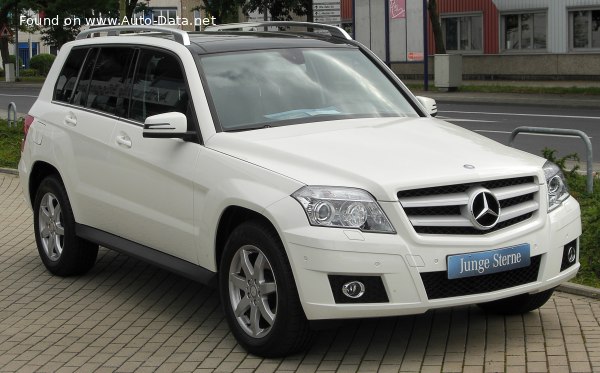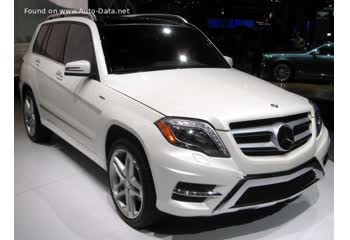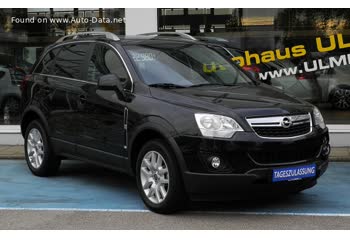Everything you need to know about specifications and performance - Mercedes-Benz GLK 2010 - GLK 200 CDI BlueEFFICIENCY (143 Hp) 7G-TRONIC

Overview:
What is the engine capacity of a Mercedes-Benz GLK 2010?
The engine capacity of the Mercedes-Benz GLK 2010 is 2143.
Mercedes-Benz GLK 2010 How many horsepower?
The engine power of the Mercedes-Benz GLK 2010 is 143 Hp @ 3200 rpm..
What is the Mercedes-Benz GLK 2010 engine?
Mercedes-Benz GLK 2010 engine is OM 651.916. (Click to see other cars using the same engine)
How much gasoline does a Mercedes-Benz GLK 2010 consume?
The Mercedes-Benz GLK 2010 consumes 6.3-6.7 liters of gasoline per 100 km
General:
Brand: Mercedes-Benz
Model: GLK
Generation: GLK (X204)
Modification (Engine): GLK 200 CDI BlueEFFICIENCY (143 Hp) 7G-TRONIC
Start of production: 2010
End of production: 2011
Powertrain Architecture: Internal Combustion Engine
Body type:Sports Utility Vehicle (SUV)
Seats: 5
Doors: 5
Engine:
Engine systems: Particulate filter
Power: 143 hp @ 3200 rpm.
Power per litre: 66.7 hp/l
Torque: 350 nm @ 1200-2800 rpm.
Engine Model/Code:OM 651.916
Engine displacement: 2143
Number of cylinders: 4
Engine configuration: Inline
Number of valves per cylinder: 4
Fuel injection system: Diesel Commonrail
Engine aspiration: Turbocharger, Intercooler
Valvetrain: DOHC
Engine oil capacity: 6.5 l
Engine layout: Front, Longitudinal
Cylinder Bore: 83 mm
Piston Stroke: 99 mm
Compression ratio: 16.2:1
Performance:
Fuel Type: Diesel
Fuel consumption (economy) - urban: 8-8.4 l/100 km
Fuel consumption (economy) - extra urban: 5.3-5.6 l/100 km
Fuel consumption (economy) - combined (NEDC): 6.3-6.7 l/100 km
Fuel consumption (economy) - urban (NEDC): 8-8.4 l/100 km
Fuel consumption (economy) - extra urban (NEDC): 5.3-5.6 l/100 km
Fuel consumption (economy) - combined: 6.3-6.7 l/100 km
Emission standard: Euro 5
Acceleration 0 - 100 km/h: 10.8 sec
Acceleration 0 - 62 mph: 10.8 sec
Maximum speed: 190 km/h
Weight-to-power ratio: 12.1 kg/Hp, 82.4 Hp/tonne
Weight-to-torque ratio: 5 kg/Nm, 201.7 Nm/tonne
Acceleration 0 - 60 mph: 10.3 sec
Space:
Kerb Weight (kg): 1735
Max. weight (kg): 2400
Max. roof load: 75 kg
Max load (kg): 665
Trunk (boot) space - maximum: 1550 l
Trunk (boot) space - minimum: 450 l
Permitted trailer load with brakes (12%): 2000 kg
Fuel tank capacity: 59 l
Permitted trailer load without brakes: 750 kg
dimensions:
Ramp-over (brakeover) angle: 19°
Wading depth: 300 mm
Length: 4525 mm
Width: 1840 mm
Height: 1689 mm
wheelbase: 2755 mm
Width including mirrors: 2016 mm
Front track: 1567 mm
Rear (Back) track: 1588 mm
Front overhang: 813 mm
Rear overhang: 957 mm
Ride height (ground clearance): 201 mm
Minimum turning circle (turning diameter): 11.5 m
Approach angle: 23°
Departure angle: 25°
Climb angle: 35°
Powertrain, Suspension and Brakes:
Drivetrain Architecture: The Internal combustion Engine (ICE) drives the rear wheels of the vehicle.
Drive wheel: Rear wheel drive
Number of gears and type of gearbox: 7 gears, automatic transmission G-TRONIC
Front brakes: Ventilated discs
Rear brakes: Disc
Assisting systems: ABS (Anti-lock braking system)
Steering type: Steering rack and pinion
Power steering: Hydraulic Steering
Tires size: Front wheel tires: 235/60 R17; 235/50 R19; 235/45 R20
Wheel rims size: Front wheel rims: 7.5J x 17; 7.5J x 19; 8.5J x 20
Front suspension: Independent, type McPherson with coil Spring and anti-roll bar
Rear suspension: Independent multi-link Spring suspension with stabilizer
See also

Last generation.
Its production began in 2012 until 2015

Same production year and almost the same engine capacity.
Its production began in 2010 until 2016
Write a comment